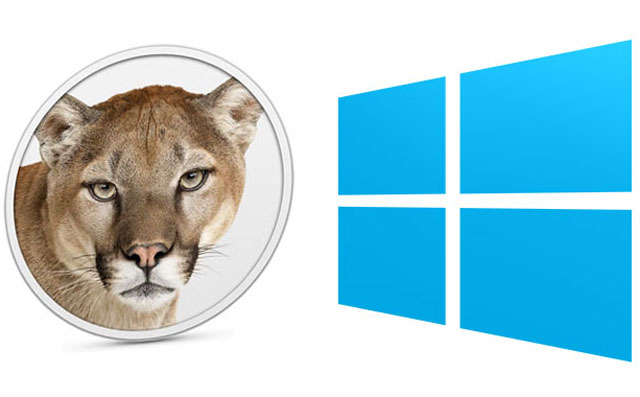
The decades-long rivalry between Apple and Microsoft will take a dramatic new turn in the next few months.
Both companies have announced retail-ready versions of their respective new operating systems are just about ready for consumers to start using them. For Microsoft, Windows 8 will determine the software giant’s future.
Windows 8 is the more anticipated release of the two operating systems due to what it means for the company’s strategy and future well-being, particularly in the fast-growing tablet market that Apple continues to dominate with the iPad.
Microsoft was first out the gate this week, announcing it would release the RTM, or release to manufacturing, final version of Windows 8 in the first week of August. However, it won’t get the new software into consumers’ hands before October.
Apple’s OS X 10.8, better known as Mountain Lion, development of which is now finished, should get to market within the next two or three weeks.
It’s easier for Apple to get its operating system out quickly once it’s finished because of its closed ecosystem, where the number of devices it has to support are relatively few next to all of the original equipment manufacturers that build hardware that runs Windows.
Windows 8 will be available in four main versions; Mountain Lion will have only one flavour for all Mac notebooks and desktops. Windows users will be able to download or purchase DVD copies of the new operating system, while Apple users will have to settle for a download.
Aside from its tile-driven Metro user interface, which seeks to move away from the list and icon-driven interface of earlier versions of the software, Windows 8 will include tight integration with SkyDrive, Microsoft’s cloud storage solution.
The Metro interface is set to become common across Microsoft products, from desktops to laptops and from tablets like Microsoft’s own Surface slate PCs out later this year to Windows Phone-powered devices.
Microsoft, unlike rival Apple, has opted for a top-down approach to its operating system, taking the Windows experience and pushing it from desktop computers and laptops down onto tablets. Apple, on the other hand, is pushing in the other direction, taking iOS for the iPhone to power the iPad. It’s not clear yet which strategy will eventually appeal more to consumers.
Apple is gradually integrating more features from iOS into Mac OS X and that trend will continue with Mountain Lion. It’s clear both companies want to offer an experience across devices that is as unified as possible, not only because users are coming to expect it.
Apple has used its success in tablets and smartphones to drive laptop sales. Microsoft is trying to achieve the reverse. Key to Microsoft’s efforts will be convincing developers to build apps for Metro and for Windows Phone.
Windows 8 is being positioned as a wholesale overhaul of the Microsoft experience, with Mountain Lion being a comparatively incremental update.
Either way, incremental update or overhaul, fans of both platforms are champing at the bit to get hold of the software that will set the course for computing in the years ahead. — (c) 2012 NewsCentral Media




